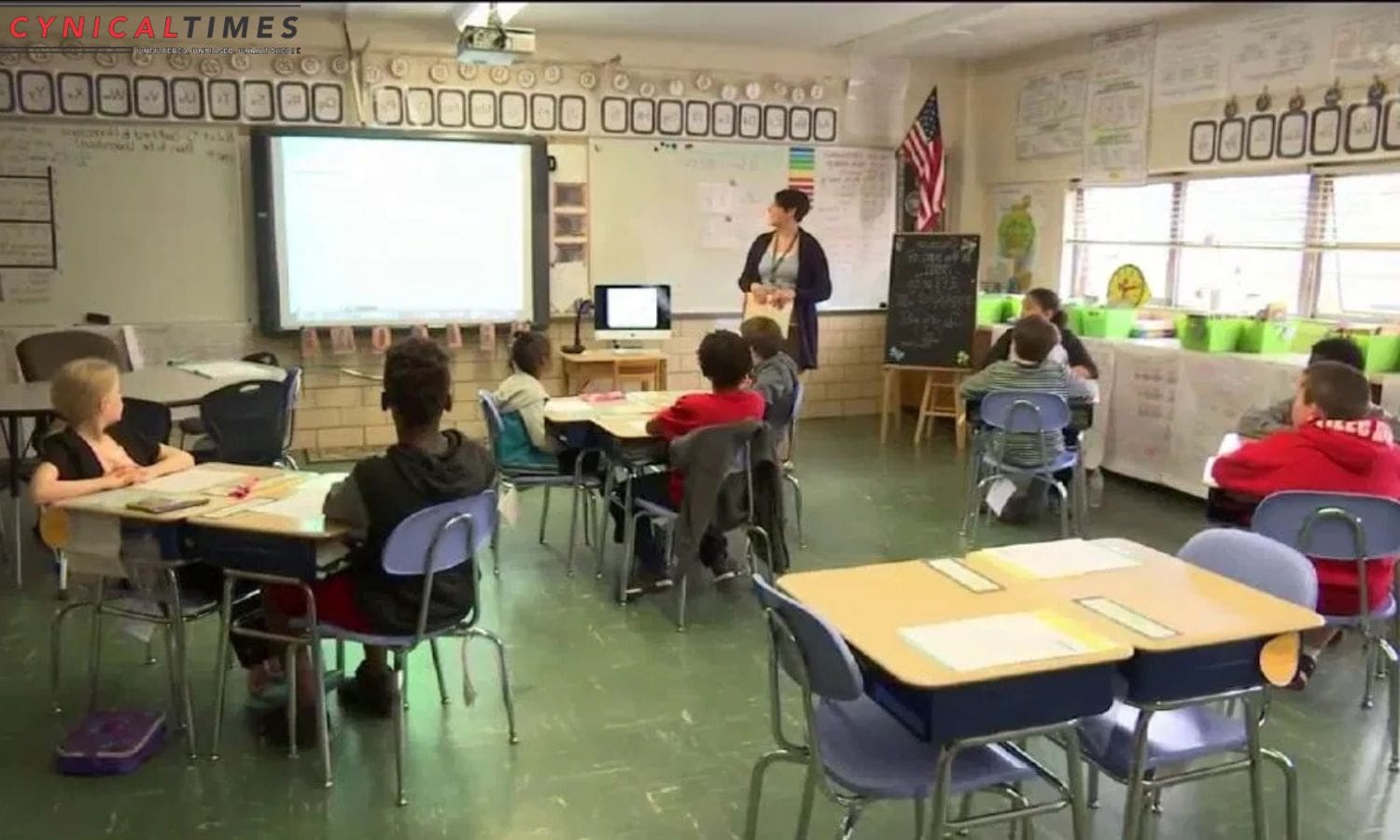California Schools Embrace a Cursive: In a move towards enhancing literacy skills and fostering cognitive development, California schools are set to embrace a cursive comeback in 2024. This reintroduction of cursive writing instruction comes after years of debate and legislative efforts to revive this traditional form of handwriting.
With various Bay Area districts at the forefront of this educational shift, students and educators alike are engaging in a discourse on the relevance and benefits of cursive writing in the modern era.
Implications of California’s renewed focus on cursive education.
Key Takeaways Of California Schools Embrace a Cursive
- California has decided to reintroduce cursive instruction in schools in 2024 through bill AB 446, signed by Governor Gavin Newsom.
- The aim is to equip students with the skills to read and write in cursive, which is beneficial for accessing historical documents and developing fine motor skills.
- The previous state of cursive education in California lacked uniformity, with declining emphasis due to the focus on digital literacy and limited resources for effective instruction.
- The current status of cursive education in Bay Area districts involves the gradual implementation of cursive education, with training provided to teachers and a goal of developing strong handwriting skills.


Introduction and Background Of California Schools Embrace a Cursive
California’s decision to reintroduce cursive instruction in schools in 2024 marks a significant shift in educational policy. Governor Gavin Newsom’s signing of bill AB 446 signals a recognition of the value of cursive writing in fostering cognitive development and enhancing learning outcomes.
The revival of cursive instruction in elementary grades aims to equip students with the skills necessary to read and write in cursive, enabling them to access historical documents, develop fine motor skills, and improve neural connections.
Assemblywoman Sharon Quirk-Silva played a pivotal role in championing this initiative, emphasizing the cognitive benefits associated with cursive writing. By reintroducing cursive instruction, California schools are embracing a traditional form of communication while also promoting critical thinking, creativity, and cultural literacy.
This shift in educational policy reflects a commitment to providing students with a well-rounded education that prepares them for success in the digital age.
Previous State of Cursive Education
Cursive education in California schools prior to the reintroduction in 2024 was characterized by inconsistencies and variations in enforcement across districts. The previous state of cursive education can be summarized as follows:
- Lack of uniformity: There was no standardized curriculum or guidelines for teaching cursive writing, resulting in a lack of consistency across schools and districts. Some schools prioritized cursive instruction, while others did not offer it at all.
- Declining emphasis: With the implementation of the Common Core State Standards, cursive education took a backseat as the focus shifted towards digital literacy and keyboarding skills. Many educators believed that cursive was becoming obsolete in the age of technology.
- Limited resources: Due to budget constraints, schools often lacked the necessary resources and materials for effective cursive instruction, further contributing to its decline.
Legislative Process and Reception
The legislative process and reception of the cursive education bill in California were met with varying degrees of support and opposition.
Bill AB 446 faced resistance from some lawmakers who argued that cursive was no longer relevant in the digital age. However, proponents of the bill highlighted the importance of cursive in developing fine motor skills and preserving cultural heritage.
Despite the initial opposition, the bill eventually passed through the legislative process, with adjustments made to accommodate concerns raised by school officials and critics.
One major concern was the mid-year implementation of the cursive curriculum. School officials worried about the logistical challenges of incorporating cursive into the curriculum without disrupting ongoing lessons.


Also Read: Campaign Finance Charge Dropped: Unraveling the Bankman-Fried Legal Saga
Current Status of Cursive Education in Bay Area Districts
In Bay Area districts, the implementation of cursive education is currently underway, with schools navigating the logistical challenges of incorporating the curriculum mid-year. The current status of cursive education in these districts can be summarized as follows:
- Palo Alto Unified, Menlo Park City School District, San Jose Unified, Santa Clara Unified, Milpitas Unified, Oakland Unified, Hayward Unified, San Ramon Valley Unified, Dublin Unified, and Sunnyvale School District have all introduced cursive education into their curriculum.
- Teachers are receiving training on how to teach cursive writing effectively.
- Students are gradually being introduced to cursive writing, starting with basic letter formations and progressing to more complex words and sentences.
The goal of these districts is to ensure that students develop strong handwriting skills and can read and write cursive proficiently. The implementation of cursive education is seen as a valuable addition to the curriculum, providing students with the ability to connect with historical documents and develop their fine motor skills.
Student Perspectives and Debate on Cursive’s Relevance
As students navigate the incorporation of cursive education mid-year, their perspectives and the ongoing debate surrounding the relevance of cursive in contemporary education continue to shape the discussion.
While proponents argue that learning cursive can enhance cognitive skills such as fine motor control and reading comprehension, critics question its practicality in the digital age.
Some students view cursive as a valuable skill, believing that it adds a personal touch and connects them to historical documents. They appreciate the elegance and artistry of cursive writing, seeing it as a form of self-expression.
However, others question the necessity of cursive in today’s society, arguing that technological advancements have rendered it obsolete. They argue that time spent on cursive could be better used to teach more relevant skills for the future workplace.
The debate on cursive’s relevance remains unresolved, with students at the center of this ongoing conversation.


Conclusion Of California Schools Embrace a Cursive
In conclusion, the resurgence of cursive education in California schools in 2024 has sparked debate among students and educators regarding its relevance.
Despite previous neglect, the legislative process and reception have resulted in the implementation of cursive instruction in Bay Area districts.
As student perspectives vary on the importance of cursive, ongoing discussions surrounding its value in a modern society continue to shape the future of education in California.
Our Reader’s Queries
Is cursive taught in California schools?
In the past, cursive writing was a skill that everyone acquired. However, with the rise of technology, many schools in the United States have removed it from their curriculum. Nevertheless, there has been a recent resurgence in its popularity. California has now joined 22 other states in mandating that public school students learn this art of loops and strokes.
What is the new cursive law in California?
California schools are now required by state law to teach cursive writing to students in first through sixth grades. This new law, which came into effect in January, aims to ensure that students have the necessary skills to read and write in cursive. Interestingly, only 11 states in the US currently have laws that mandate cursive instruction. By including cursive writing lessons in the curriculum, California is taking a step towards preserving this important form of communication.
How many states still require cursive to be taught?
As of now, 21 states mandate some form of cursive handwriting instruction, up from 14 in 2016. The number increased to 19 during the 2018-2019 academic year, according to mycursive.com, a website that monitors cursive writing requirements across the country.
Do public schools still teach cursive writing?
Persistence paid off for one woman who spent seven years advocating for the teaching of cursive handwriting in California schools. Thanks to her efforts, a new law was passed requiring the instruction of this important skill in grades one through six. This move was supported by both the legislature and the state’s Democratic governor, Gavin Newsom. Now, students will have the opportunity to learn the art of joined italics, which will benefit them in many ways throughout their academic and professional lives.

